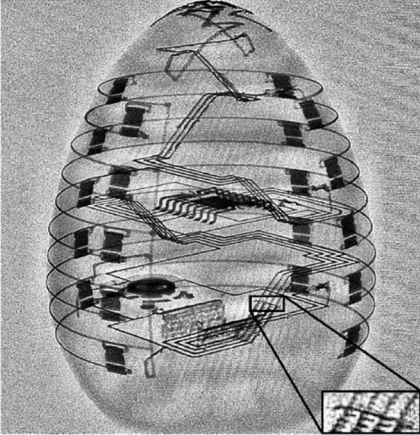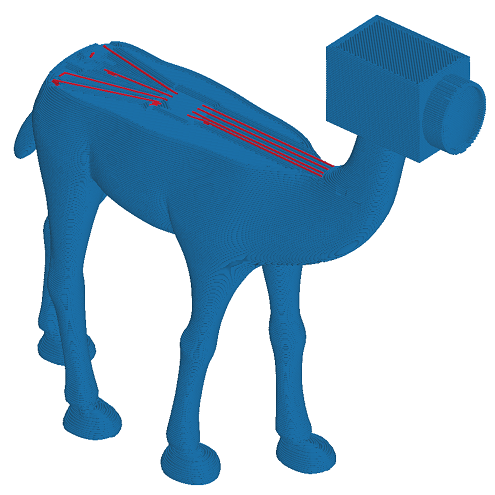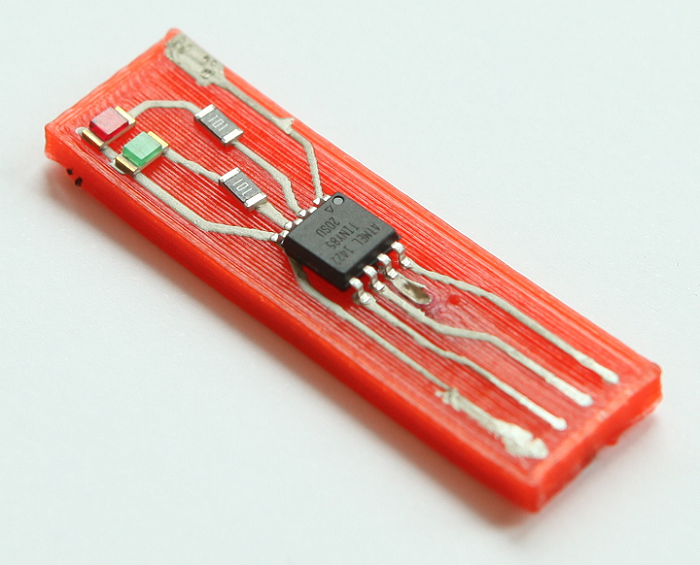Since 2009, Neotech AMT GmbH, based in Nuremburg, Germany, has been working to develop technologies for 3D printing electronics, and several years ago combined Aerosol Jet Printing (AJP) with its own five-axis print motion platform to enable direct write printing of electronics, such as 3D molded interconnect devices, for a variety of markets, including automotive, medical, mobile communications, and wearables.
Now, the company is partnering with researchers from the University of Hamburg to make electronics 3D printing more reliable, and scalable for industrial applications, by creating a quality assurance (QA) system driven by a camera and artificial intelligence (AI).
“This project is an important step towards closed loop control for hybrid manufacturing processes,” explained Dr. Florens Wasserfall from the University of Hamburg. “Variations in quality and accuracy have been a major limitation ever since the invention of additive technologies. Active process monitoring is a core aspect to enable reliable and scalable manufacturing of highly integrated, smart products.”
Together with the university’s TAMS Group (Technical Aspects of Multimodal Systems), which is led by Prof. Dr. Jianwei Zhang, Neotech is developing an AI- and camera-based monitoring system to be used for 3D printing objects with integrated electronics. The work is called Project KamEl, and will continue for quite some time, with a projected end date in September 2022. The Central Innovation Program for SMEs (ZIM) from Germany’s Federal Federal Ministry for Economic Affairs and Energy (BMWi) is providing the funding for this 3D printed electronics monitoring system project.
“Automated Quality Assurance (QA) will be developed with which the manufacturing processes can be monitored online in the 5-axis manufacturing cell,” the Project KamEl site states.
So, here’s how it works: the 3D printing process will be recorded and classified, and, dependent on what kind of processing errors show up, the platform will automatically correct them. Specifically, the printed electrical structures will be recorded in 3D space by the vision system, and the platform will assemble the images together, making sure to compensate for depth of field elements and potential distortion.
AI-enabled image processing is used to recognize the prints in order to check for defects, such as short circuits, line breaks, and geometrical errors in thickness and width. If the platform determines there is a defect in the print, the AI system will choose the correct option, out of three possibilities, that should fix it:
- automated correction by the system
- correction with input from the operator
- part rejection, which stops the print
This correction thus creates a closed-loop system of the conductive track 3D printing process.
“This exciting development opens the way for guaranteed QA and traceability in “Fully Additive” 3D Printed Electronics whist also increasing product yields,” said Dr. Martin Hedges, the Managing Director of Neotech AMT. “The risk of defects only being discovered after lengthy manufacturing processes is mitigated and autocorrection will bring yield losses to an absolute minimum.”
Additionally, the data that this closed loop system creates will be archived for documentation, so the KamEl team can support certifications in important applications.
(Source: Neotech AMT GmbH)
Subscribe to Our Email Newsletter
Stay up-to-date on all the latest news from the 3D printing industry and receive information and offers from third party vendors.
You May Also Like
New Report: Semiconductor Industry to See $1.4B in 3D Printing Revenues by 2032
“The semiconductor sector has become the most strategically significant area of global industry.” Truer words are hard to come by when it comes to the modern world, and they are...
Will Photonic-Crystal Lasers Revolutionize 3D Printing?
Powder bed fusion (PBF) for metals and polymers predominantly utilizes lasers as the primary heat source. Some directed energy deposition (DED) technologies also employ lasers, while various vat polymerization methods...
3D Printing Unpeeled: Orbex Investment, IndoMIM and HP, Ultrasonic Waves
INDO-MIM has bought three HP Metal Jet S100 printers, operating two in India and one in Texas. This is a win for HP because the company has deep experience in...
3D Printing Webinar and Event Roundup: April 21, 2024
It’s another busy week of webinars and events, starting with Hannover Messe in Germany and continuing with Metalcasting Congress, Chinaplas, TechBlick’s Innovation Festival, and more. Stratasys continues its advanced training...


































